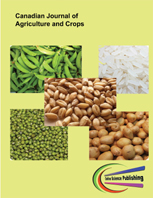Phylloquinone Content from Wild Green Vegetables May Contribute Substantially to Dietary Intake
DOI:
https://doi.org/10.20448/803.1.2.83.88Keywords:
Vitamin K1, Wild plants, Diet, Vitamin K antagonists, Humans, Dandelion, Ramson, Stinging nettle, Ground elder.Abstract
Background: Traditional Nordic eatable wild plants are now sold in local stores and available to everyone. Wild vegetables may contain large amounts of vitamin K1. Due to the concomitant therapeutic use of anticoagulants among the populations, it is important to gain knowledge about the content of vitamin K1 in these products, as well as their contribution to the diet. The objective of this study was to measure the vitamin K1 content in four wild eatable plants and to estimate how much these wild vegetables contribute to the daily dietary vitamin K1 intake. Results: The wild vegetables had a high phylloquinone content of 400-600 µg vitamin K1/100 g fresh weight. The average daily intake when consuming the average Danish diet is low (64 ±20 µg/d or 72±23 µg/10 MJ/d), however, inclusion of wild vegetables as in the New Nordic Diet increases the vitamin K1 intake to 233±51 µg/d or 260±50 µg/10 MJ/d. Conclusion: Inclusion of more wild vegetables may substantially increase the intake of vitamin K, which could pose a risk for people treated with vitamin K antagonists (VKAs), but may be beneficial for the remaining population.


